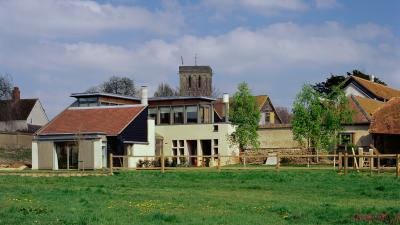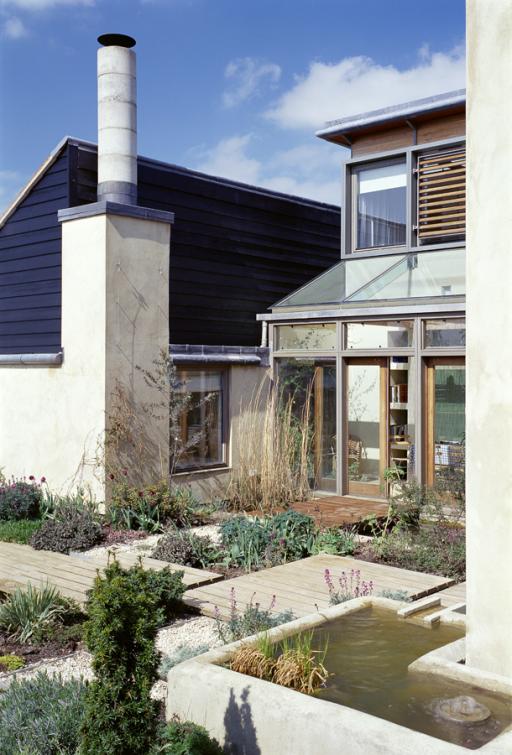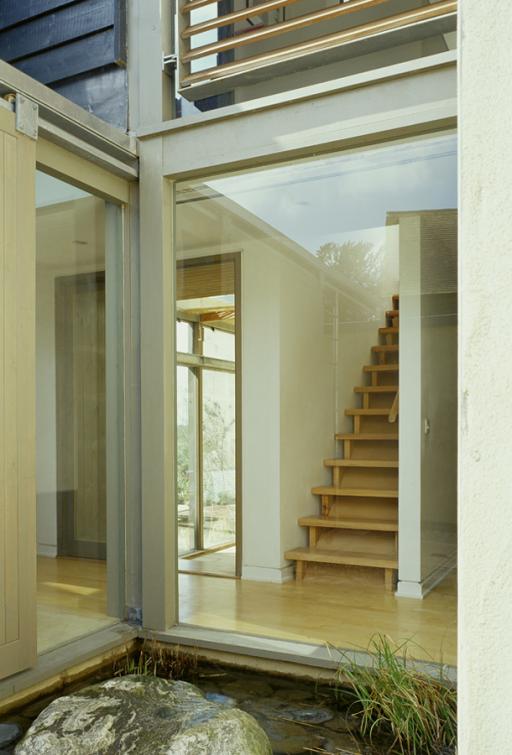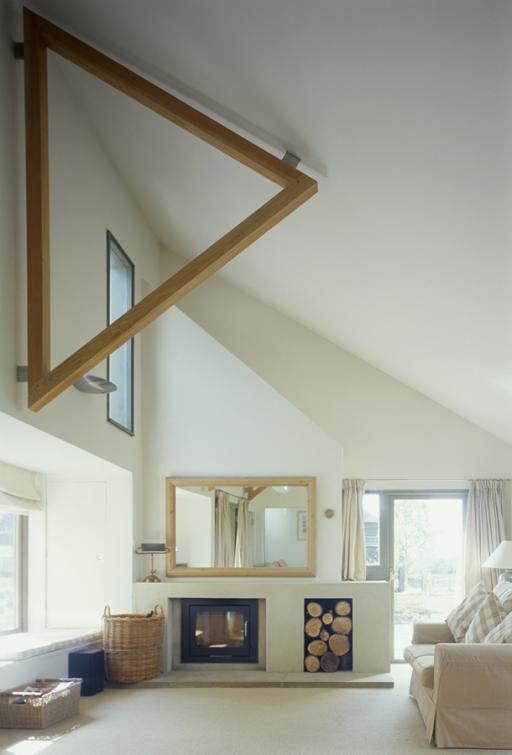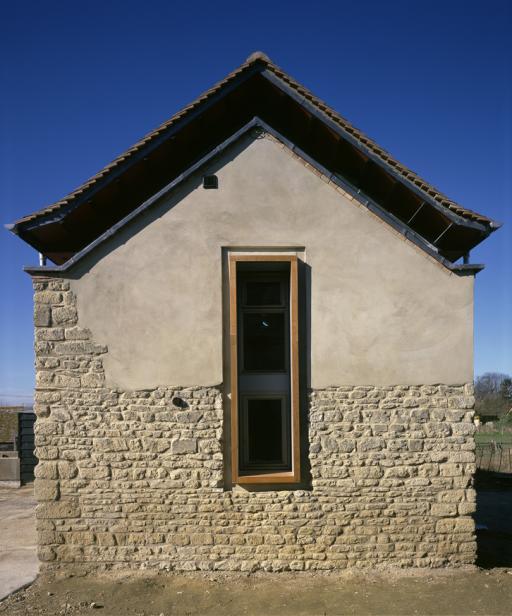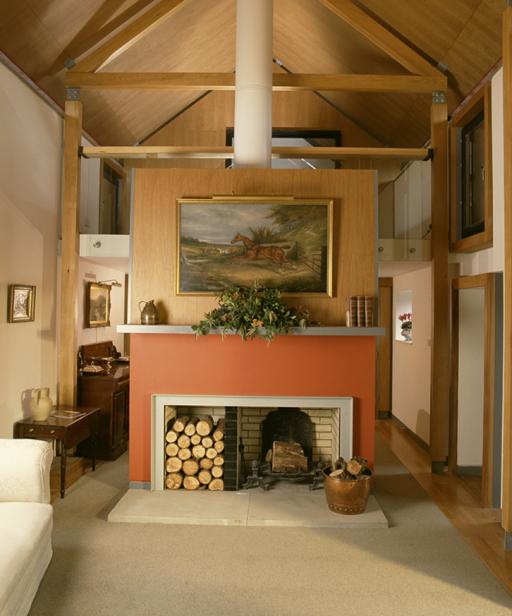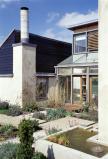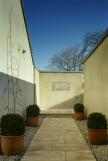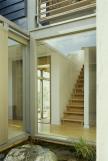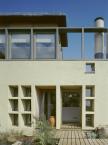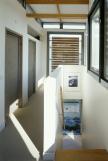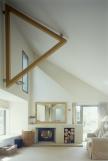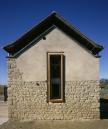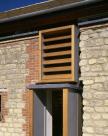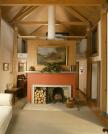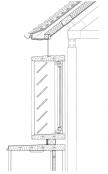Hollick and Bucknall House are situated in Haddenham, Buckinghamshire – a quintessential English village and significant conservation area. This private commission by a local family called for two new dwellings, one requiring the conversion and adaptation of existing farm buildings, the other a new house.
The designs respond to the geometry of the farmyard grouping and its relationship with the surrounding landscape as well as the family’s preoccupation with farming, horticulture and landscape gardening.
The adaption of the existing barns that form Bucknall House are combined with the new dwelling in both plan and form to extend the network of farmyard space. Two new courtyards are created between the new and old structures with the eastern edge enclosed by the existing timber grain store. A ha-ha on the open western boundary is set up by the geometry of a third open sided hay barn and delineates the farmyard cluster and the bucolic pastures beyond.
In the new dwelling a 'garden wall' organises both internal and external space; an architectural device that provides support for the stairs, conservatory, library, potted herbs and a fireplace and 'sung' for contemplation. It also links the spatial geometry of the house with the topography of the existing farmland.
The converted barns have walls of Oxfordshire stone and wychert (a material unique to the Vale of Aylesbury and only employed for a limited period in the nineteenth century) and were restored while new exposed timber posts and trusses stabilise the existing structure and organise the new living environment. The new roof hovers over a clearstory of structural glass, which creates the two storeys required to deliver the first floor accommodation while, from outside, quietly indicating the new organisation within. The fenestration inserted through the thick stone walls is expressed as large cedar box frames (some louvered) a continuation of the precise journey within as well as a robust and simple interpretation of local farm buildings components.
Together these houses also explore a relationship to place through the use of materials, whilst rejecting the slavish mimicry of the vernacular. Shiplap boarding, red clay tiles, Oxfordshire stone and wychert walls are assembled to support the contemporary spatial language and the articulation of building forms and elements.
